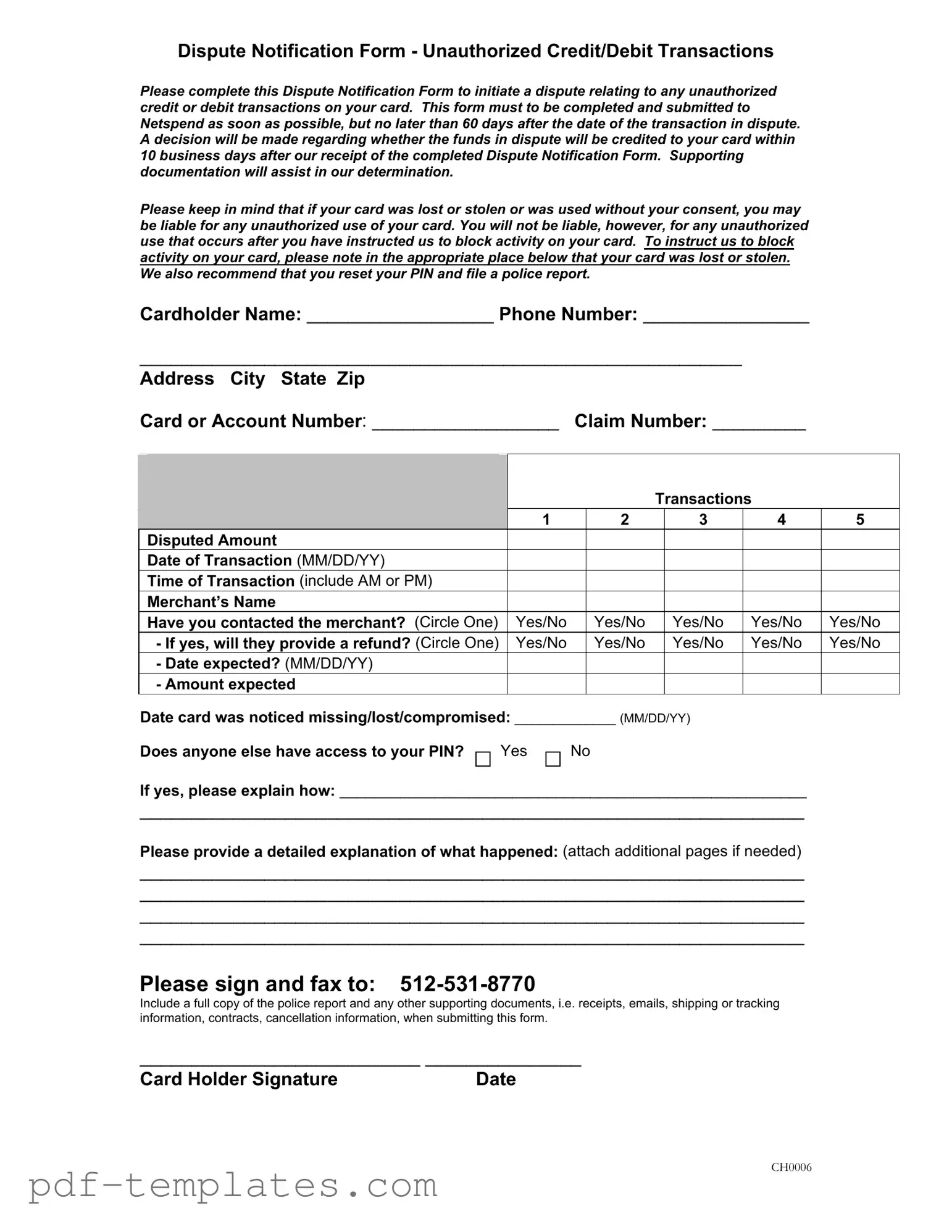The Netspend Dispute Form shares similarities with a Credit Card Dispute Form. Both documents are designed to address unauthorized transactions on a cardholder's account. They require cardholders to provide details about the disputed transaction, including the amount, date, and merchant. Additionally, both forms emphasize the importance of submitting the dispute promptly, typically within a specified timeframe, to ensure that the cardholder's rights are protected. Supporting documentation is also encouraged to strengthen the case for a refund or credit.
Another similar document is the Fraud Report Form. This form is used when a cardholder suspects fraudulent activity on their account. Like the Netspend Dispute Form, it requires detailed information about the transactions in question. Both forms aim to gather essential information to help the financial institution assess the situation and take appropriate action. The focus on timely submission and the inclusion of supporting evidence, such as a police report, is common in both documents.
In addition to these important forms, families looking to educate their children outside the traditional school system must also consider the necessary paperwork involved in homeschooling, particularly the Homeschool Letter of Intent form. This document serves as a formal notification to the local school district, ensuring that parents communicate their intentions and lay a solid foundation for their child's educational journey.
The Chargeback Request Form is yet another document that aligns with the Netspend Dispute Form. Chargebacks are initiated by cardholders when they believe a transaction was unauthorized or incorrect. Both forms require similar information about the transaction and allow for multiple disputes to be listed. They also highlight the need for prompt action and the submission of relevant documentation to support the claim.
The Unauthorized Transaction Report serves a similar purpose as the Netspend Dispute Form. It is specifically designed for reporting transactions that were made without the cardholder's consent. Both documents require the cardholder to detail the circumstances surrounding the unauthorized use, including any attempts to resolve the issue with the merchant. Timeliness and supporting documentation are emphasized in both forms to facilitate a quicker resolution.
A Lost or Stolen Card Report is comparable to the Netspend Dispute Form as well. When a cardholder reports their card as lost or stolen, they often need to provide information about unauthorized transactions. Both forms require the cardholder to indicate when the card was noticed missing and to describe any unauthorized activity. The need for immediate action and the potential for liability based on the timing of the report are common themes.
The Identity Theft Affidavit is another document that parallels the Netspend Dispute Form. When a cardholder believes their identity has been compromised, they may need to fill out this affidavit to report fraudulent transactions. Both documents require detailed explanations of the events leading to the dispute and encourage the inclusion of supporting evidence. They also stress the importance of acting quickly to mitigate further damage.
Lastly, the Account Verification Form is similar in that it may be used when there are discrepancies in account activity. This form requests information from the cardholder to confirm transactions and account status. Like the Netspend Dispute Form, it aims to clarify any issues and resolve them efficiently. Both documents highlight the importance of providing accurate information and supporting documentation to facilitate a smooth resolution process.
